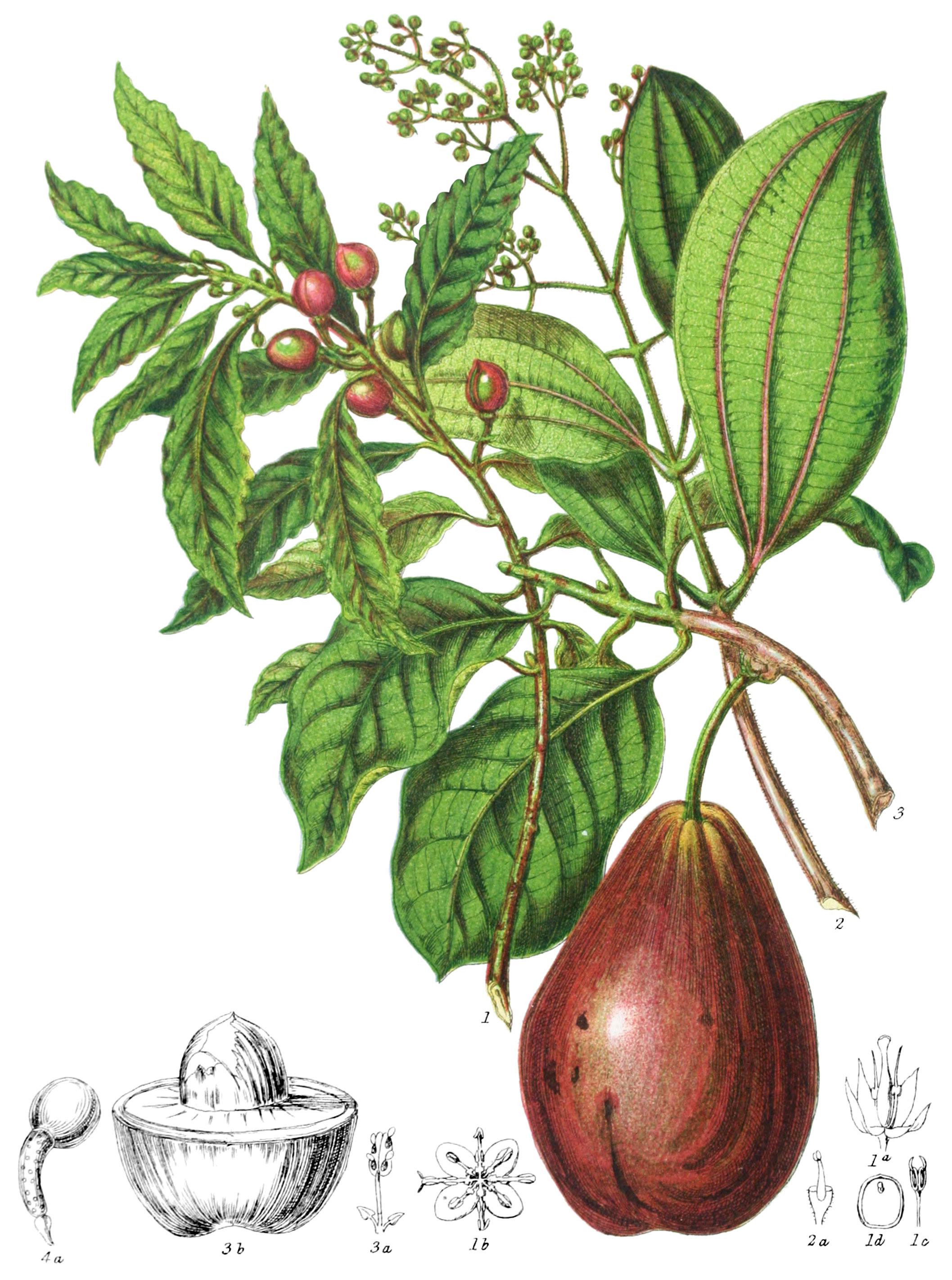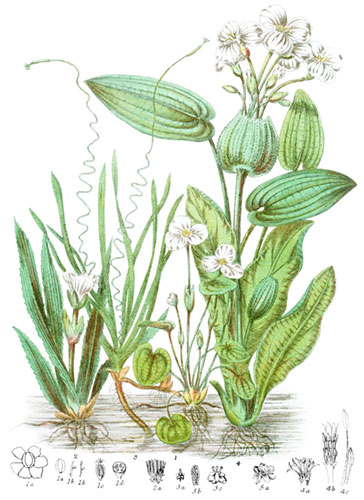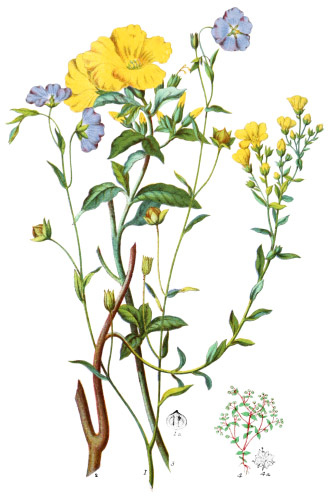Key characteristics
Trees, some of which are of large size. The leaves are alternate, seldom opposite, entire at the edges, or rarely lobed, without stipules. The flowers are small, and grow in panicles or umbels, or small cluster. The clayx is four to six-cleft, petals are wanting; sometimes the stamens and pistil are not perfect in the same flowers. The stamens are of definite number, placed on the calyx, usually twice as many as its segments, and opposite to them. The three innermost stamens are imperfect; the six outer have perfect anthers, which are two to four-celled, the cells bursting by a long persistent valve, opening upwards. The inner filaments usually have glands at their base. The ovary is above the calyx, one-celled, with a simple style, and stigma, either obtuse or two or three-lobed. The fruit is either a berry or a drupe, naked or covered, its stalk often becoming enlarged (4). The seed has no albumen.
This Tribe is chiefly distinguished from Thymelaceæ and others by the reflexed valves of the anthers.
Aromatic properties, oil and camphor, exist abundantly in these trees.
Select plants in this order
Not all plants listed are illustrated and not all plants illustrated are listed.
- Laurus, derived from the Celtic laur, green, is a genus with evergreen leaves, existing in the East and West Indies, and more abundantly in North America. It yields valuable timber in its largest trees, aromatic oil, spice, camphor, and a delicious fruit.
- L. nobilis (1), the only European species, was selected in ancient times as an appropriate plant for garlands to adorn heroes and sages: it was consecrated to the service of priests, and used by them in their sacrifices. The leaves contain aromatic oil, and a small portion of prussic acid, which gives them medicinal power; the fruit when boiled yields also oil. In the southern parts of Hampshire, the Bay grows luxuriantly, and bears a plentiful crop of fruit; but in Italy it attains greater height, becoming a tree.
- L. indica, the Royal Bay, is a native of Madeira and the Canaries, and affords a useful wood for furniture.
- L. chloroxylon, the Cog-wood tree of Jamaica, is sixty feet high; the wood is hard and tough, well adapted for the construction of sugar-mills.
- One of the most valuable spices is Cinnamon, the inner bark of several trees of this tribe: Cinnamomum javanicum (2) abounds in Java and the neighbouring isles. In Ceylon, the trees of that produce it are so common, that the wood is used for fuel and various purposes. Twice in the year the young branches are cut, the outer bark is scraped off, the thin inner layer carefully loosened. On being exposed to the sun, it curls up into the form we receive it in. The trees have a stunted appearance, not being allowed to grow above nine feet: the delicious scent is not perceptible until the branches are cut, as it is contained in the internal portion of the bark.
- Cassia bark has nearly similar properties, but is not so fragrant. The Chinese Cassia comes from Cinnamomum Cassia.
- The Clove-cassia of Brazil is the bark of Dicypellium caryophyllatum, one of the noblest trees of this tribe as described by Martius.
- Persea gratissima (3) is the only eatable fruit; in the West Indies, it is called Avocado, or Alligator Pear; the pulp is of a sweet, agreeable flavour, but Europeans think it so rich as to require the addition of some kind of spice or wine. By the negroes it is considered their chief delicacy, and it is eaten by every animal or bird; the large seed is enveloped in a thin membranous coat.
- Camphor, a concrete state of oil, is a frequent secretion of this tribe; a large supply is obtained from all parts of Camphora officinarum, which grows plentifully in the Island of Formsa, and being taken in junks to Canton is dispersed thence to various countries.
- Sassafras officinarum, a large tree of North America, yields an aromatic oil from its berries, and the tonic bark is used medicinally.
- Benzoin odoriferum has similar properties.
- Some of the fruits bear a resemblance to the true Nutmeg, but are of inferior quality.
- The Clove-nutmegs of Madagascar are produced by Agathophyllum aromaticum; the Brazilian Nutmegs by Cryptocarya moschata.
- The fruit of Acrodiclidium, or Camara-nutmeg, is highly esteemed in Guiana for its medicinal properties.
- Among the fever and ague remedies of Guiana, Nectandra Rodiæi, the Bibiri, is considered the best; the wood, celebrated for its hardness, is known as the Greenheart of Demerara.
- Oreodaphne is remarkable for a hard yellow wood, with a very disagreeable odour.
- There occurs frequently one exception in a tribe, which seems to make a link with other plants of a very different manner of growth and appearance: Cassytha is an example of such a variation from the chief type. It is a slender cord-like leafless plant, resembling most nearly Dodder, and, like that parasitic, bearing small flowers with round white fruit. The structure of the flower, more especially of the stamens with recurved anther-valves, is precisely that of Laurels; but the fruit differs in being enclosed in the calyx, and becoming a berry. Although not fully conformable to any known Order, it appears to be most rightly placed here.
Locations
This extensive Tribe inhabits cool situations in the Tropics; a few species are found in Madeira, Teneriffe, and Madagascar; a very few advance northwards into North America; scarcely any exist in Africa; one only in Southern Europe. Cassytha belongs to the Tropics.
Legend
- Laurus nobilis, Sweet Bay. Italy.
- Pistil Flower.
- Stamen Flower.
- Stamen.
- Section of Seed.
- Cinnamomum javnicum, Japanese Cinnamon. Java
- Pistil.
- Persea gratissima, Avocado Pear. West Indies.
- Stamen.
- Section of Fruit.
-
- Dehaasia media. Fruit on enlarged Stalk. Java.
Explore more
Posters
Decorate your walls with colorful detailed posters based on Elizabeth Twining’s beautiful two-volume set from 1868.
Puzzles
Challenge yourself or someone else to assemble a puzzle of all 160 botanical illustrations.





